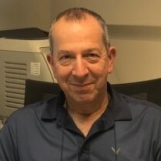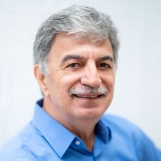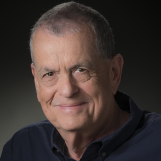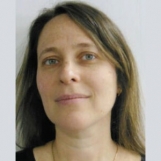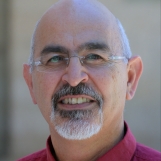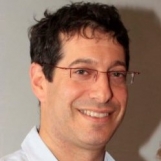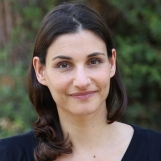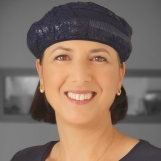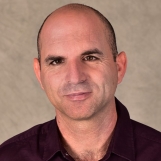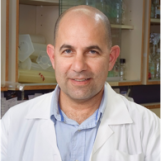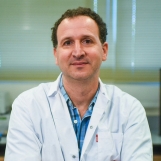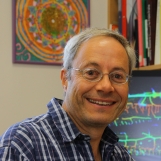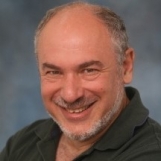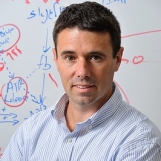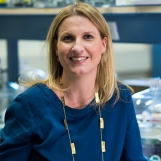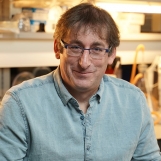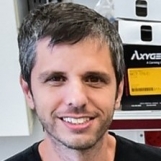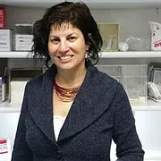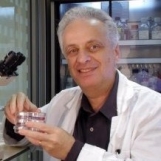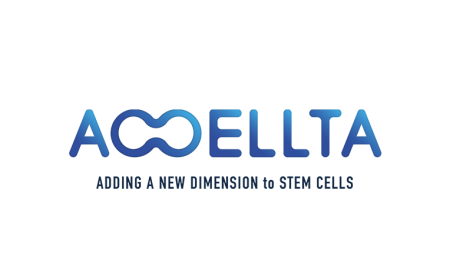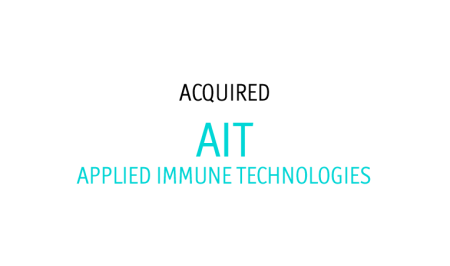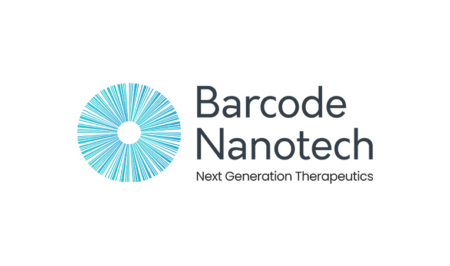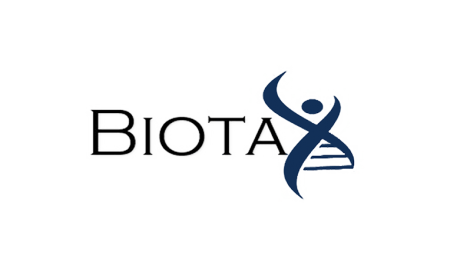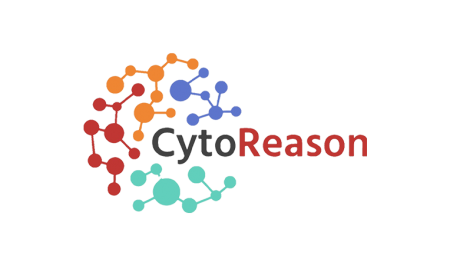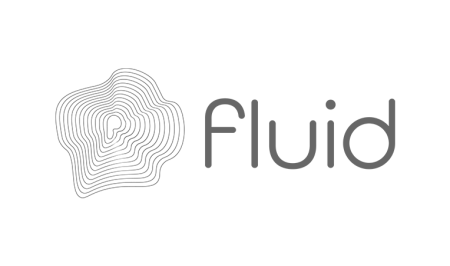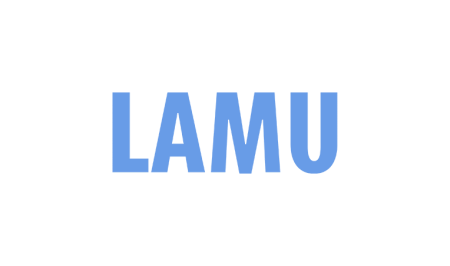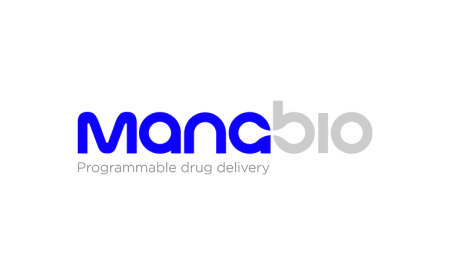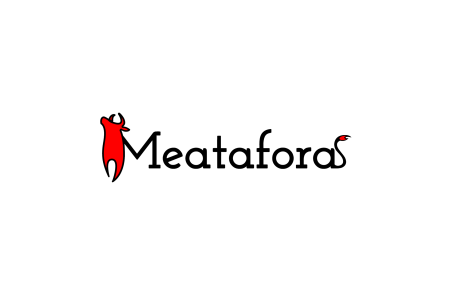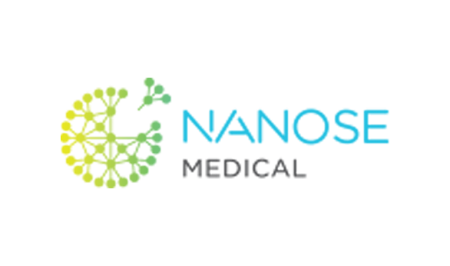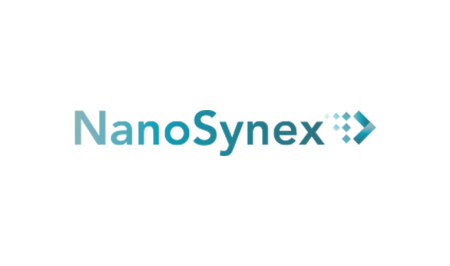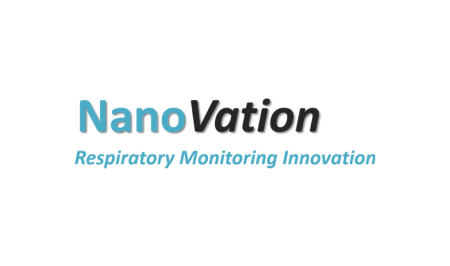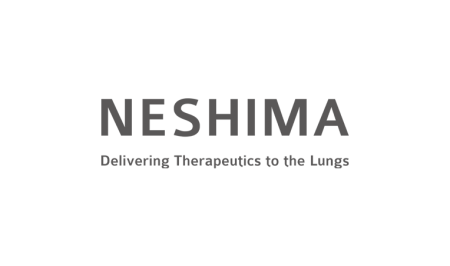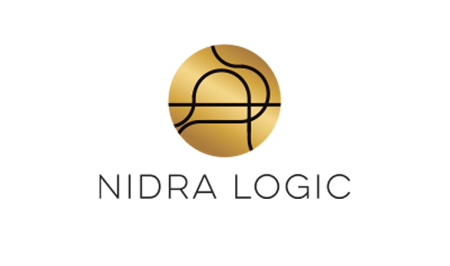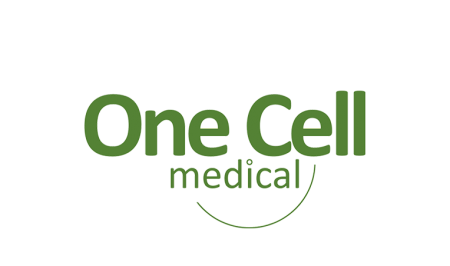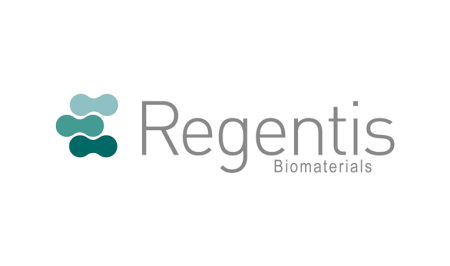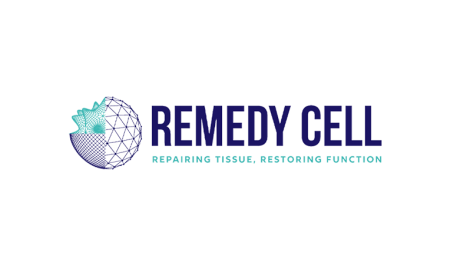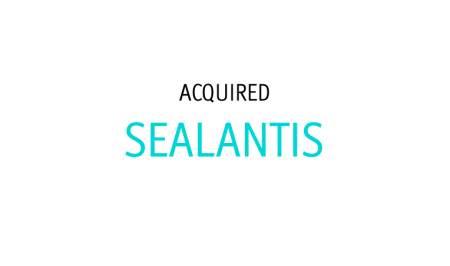3D printed biodegradable implants
In severe nerve injuries, major gaps are formed within the tissue and the axons in the spinal cord fail to regenerate. This failure is related to the formation of cystic cavities within the injury site. Unlike healthy extra-cellular matrix, the...
Categories:
Medical Devices|Pharmaceuticals and Biotechnology
A novel cancer immunotherapy approach
Cancer immunotherapy shows poor clinical results in many cancer types, due to deprivation of required metabolic nutrients from T cells - tumors compete with T cells for the same essential nutrients including glucose and amino acids. Once T cells arrive...
Categories:
Pharmaceuticals and Biotechnology
AI-powered omics prediction from histology for enhanced diagnostics, response prediction and explainability
Technology This AI-driven technology predicts omics signatures directly from histological biopsy images, transforming standard pathology into a multi-omics-powered diagnostic tool. The method integrates machine learning to map molecular data onto histology, enabling precise prognosis and personalized treatment decisions. Tested on...
Categories:
Pharmaceuticals and Biotechnology
An ultra-sensitive nanopore biosensors for detection of KRAS mutations in colorectal cancer
One of the main challenges impeding genomic-based disease identification and characterization stems from the fact that related analytes, such as pathogens genes and cancer biomarkers, are present in extremely low concentrations in biomedical samples. Thus, currently, most clinical genomic identification approaches...
Categories:
Medical Devices|Pharmaceuticals and Biotechnology
New antibiotics are a necessity in today’s modern medicine due to the increasing prevalence of antibiotic resistant strains of pathogenic bacteria. There are many attempts at providing new antibiotic drugs by either modification of existing drugs or by finding new...
Categories:
Food and Agriculture|Medical Devices|Pharmaceuticals and Biotechnology
Antibacterial treatment using aminoglycosides as catalytically disable bacterial ribosome
The emergence of multidrug-resistant pathogens that are resistant to most currently available antibiotics is a significant clinical problem. The development of new antibacterial agents and novel approaches is therefore extremely important. One innovative approach is the development of catalytic antibiotics:...
Categories:
Pharmaceuticals and Biotechnology
Approach for targeted eradication of multidrug-resistant cancer
The frequent emergence of anticancer drug resistance continues to be a major impediment towards curative chemotherapy of various human cancers. Multidrug resistance (MDR) to multiple anticancer drugs is perhaps the most extensively studied major mechanism of anticancer drug resistance. MDR...
Categories:
Pharmaceuticals and Biotechnology
Bio-convergent approach for predicting clozapine response in schizophrenia
Schizophrenia (SZ) is a severe, incurable chronic psychiatric disorder with a worldwide prevalence of about 1% and a peak onset in late adolescence or early adulthood. The disorder is characterized by disturbances in the main human capabilities - perception, emotion,...
Categories:
Pharmaceuticals and Biotechnology
The present technology provides a method for generating a fiber from a globular protein, such as albumin, by electrospinning. Thus, albumin fibers and fabrics may be produced and used for wound dressing or for in/ex vivo tissue generation. Advantages Albumin...
Categories:
Pharmaceuticals and Biotechnology
Biosurgery based on enzymatic collagenase
Overexpressed extracellular matrix (ECM) in liver fibrosis limits drug penetration into the tumor and is associated with poor prognosis. Collagen, a triple-helix protein, is the main structural component in such diseases. Collagen viscoelastic properties play a major role in constructing...
Categories:
Medical Devices|Pharmaceuticals and Biotechnology
Bone marrow-targeted nanoparticle therapy
Treatments for bone-related diseases are limited due to significant side effects, lack of effective disease management, drug challenges, bone barrier leading to low drug concentration in bone. Bone marrow-targeted liposomes (BMTL) represent a novel nanomedicine platform designed to enhance the...
Categories:
Pharmaceuticals and Biotechnology
Brain modulation for immune system regulation (specific to the reward system)
We show in mice that through activation or inhibition of the dopaminergic neurons in the Ventral Tegmental Area (VTA) in the brain we can alter the immune response. We can control the activity of distinct immune cell lineages, and in...
Categories:
Medical Devices|Pharmaceuticals and Biotechnology
Cancer immunotherapy by nanoparticle-based magnetic support in T cells
Cancer immunotherapy shows poor clinical results in many cancer types. A potent suppressor mechanism is the deprivation of required metabolic nutrients from T cells. Tumors compete with T cells for the same essential nutrients including glucose and amino acids, and...
Categories:
Medical Devices|Pharmaceuticals and Biotechnology
Cancer multidrug resistance diagnostic method for personalize chemotherapy
The present technology provides a quick and reliable test to identify multidrug resistance in cancer cells and personalize chemotherapeutic drug treatment. Imidazoacridinones (IAs) are a novel class of fluorescent molecules which differ in their residues and are recognized and extruded...
Categories:
Pharmaceuticals and Biotechnology
Catalytic Systems for Enantio-Selective Enrichment
Chirality is an unusual aspect of chemistry, a seemingly minor detail with surprisingly far-reaching consequences in physical, chemical, and biological systems. Approximately 50% of drugs on the market today contain at least one chiral center. Many of these compounds exhibit...
Categories:
Chemistry and Materials|Pharmaceuticals and Biotechnology
CCL1-CCR8 antagonists (antibodies or small molecules)
One of the four CCR8 ligands, CCL1, produced by CCR8+CD4+FOXp3+ regulatory T cells (Treg) that are major drivers of immune regulation, potentiates their suppressive activity via induction of CCR8, FOXp3, CD39, Granzyme-B, and IL-10 in a positive feedback mechanism, making...
Categories:
Pharmaceuticals and Biotechnology
Cell fusion or destruction using nanoparticles and laser
The present technology involves the use of nanoparticles and laser light to manipulate selected cells for cancer therapy, tissue regeneration and drug production. The invention describes a method for specific cell manipulation. Gold nanoparticles are coated by a layer of...
Categories:
Medical Devices|Pharmaceuticals and Biotechnology
Compositions and methods for diagnosing and treating an inflammation
The present patented technology relates to a peptide comprising an epitope within the macrophage scavenger receptor B-I, a method of using the same, and an antibody that binds to the epitope. Scavenger receptors are cell surface proteins, typically found on...
Categories:
Pharmaceuticals and Biotechnology
Crystals for compounds entrapment and slow release
Drug delivery with slow release systems main limitation is control over the dissolution rate of the encapsulating material as well as leaching of the active material from the encapsulation. Bio-inspired approach in which drugs are entrapped within a crystalline lattice...
Categories:
Chemistry and Materials|Pharmaceuticals and Biotechnology
Detection of single and multi-center chiral molecules
Identifying chirality of molecules especially with multiple chiral centers is crucial to the pharmaceutical industry as chirality affect activity, efficacy and even pose safety issues. Currently the molecules chirality identification methods rely on weak signals and requires expensive equipment. Multiple...
Categories:
Pharmaceuticals and Biotechnology|Physics and Electro-Optics
Determining responders to inflammatory bowel disease treatment
Current treatment of Inflammatory bowel diseases (IBDs) is an empiric process, which involves decisions based on the response to therapies by the average patient, without taking into account the basic differences between patients, their specific immune status at a given...
Categories:
Medical Devices|Pharmaceuticals and Biotechnology
Developing a novel powerful treatment for inflammatory diseases
Inflammatory bowel disease (IBD) can be debilitating, causing long-term, impaired gastrointestinal structure and function. Until now, no cure has been found and existing treatments can have strongly detrimental side effects. Iron is an essential nutrient that participates in many central...
Categories:
Food and Agriculture|Medical Devices|Pharmaceuticals and Biotechnology
Developing novel therapy for Duchenne Muscular Dystrophy (DMDC)
Fibrosis, or scarring caused by the excessive deposition of extracellular matrix (ECM) is implicated in 45% of deaths in the western world. It is a key pathological feature of diseases like Duchenne Muscular Dystrophy (DMD) and multiple inflammatory and autoimmune...
Categories:
Pharmaceuticals and Biotechnology
Development extracellular arteries skeleton with a small diameter vascular tissue engineering
Heart failure is a key factor in morbidity and mortality in the western world. Heart muscle tissue differentiates shortly after birth, with the result that cardiac cells lose their ability to divide. As a result, the heart muscle tissue cannot...
Categories:
Pharmaceuticals and Biotechnology
Engineered bacteriophages for therapeutic applications
Technology This innovative platform leverages engineered bacteriophages to modulate the gut microbiome, targeting both infectious diseases and gut-microbiota-related disorders. These engineered phages offer a precision-targeted approach, interacting with bacterial communities in the gut microbiome to fine-tune microbe-host interactions and improve...
Categories:
Pharmaceuticals and Biotechnology
Enzyme mediated fibronectin inhibition for treatment of fibrosis
Fibrosis is the abnormal accumulation of fibrous extracellular matrix, causing a group of conditions known as fibrotic diseases, such as cystic fibrosis, systemic sclerosis and scleroderma. Fibrosis can be a primary condition or a secondary response, as well as promote...
Categories:
Pharmaceuticals and Biotechnology
Extracellular matrix-based cardiac scaffolds for cardiac tissue regeneration
Cardiovascular diseases and myocardial infarction (MI) in particular are the leading cause of death in the developed world. The only therapeutic options currently available for end-stage heart failure are mechanical ventricular assist devices or heart transplantation. However, these options have...
Categories:
Pharmaceuticals and Biotechnology
Facile catalysis by iron complex
A fast, cheap, and eco-friendly method for catalysis of several types of reactions: Hydrogen Isotope Exchange, Alkene Isomerization, Z-Selective Alkyne functionalization, Cross-Coupling, Hydrogenation and C-H activation. In particular, the Hydrogen isotope exchange technology is based on an iron complex, that...
Categories:
Chemistry and Materials|Pharmaceuticals and Biotechnology
Fibrin matrix for engineering tissue substitutes with internal blood vessel network
Tissue engineering holds enormous potential to replace or restore the function of damaged tissues. However, the most successful applications have been limited to thin avascular tissues such as skin and cartilage in which delivery of nutrients and oxygen relies on...
Categories:
Chemistry and Materials|Pharmaceuticals and Biotechnology
Formulation for solubilization of bioactive compounds
Some of the most potent bioactive compounds (nutraceuticals and drugs) are poorly bioavailable, which is a major hurdle towards harnessing them for preventing/curing diseases. Specifically, Astaxanthin (AX) is a red xanthophyll carotenoid found mainly in algae (notably Haematococcus Pluvialis microalga) and marine animals. AX is a stronger antioxidant than vitamin...
Categories:
Pharmaceuticals and Biotechnology
Gads as an attractive drug target
Researcher:
Prof. Deborah Yablonski
Type I hypersensitivity is a common form of allergy, affecting hundreds of millions of patients around the world, caused by allergen sensitization of immune mast cells. The most commonly-used allergy drugs, anti-histamines, target the symptoms of allergy, but cannot be...
Categories:
Pharmaceuticals and Biotechnology
Harnessing synthetic optogenetic circuits for cancer therapy
Cancer immunotherapy is associated with on-target, off-tumor cytotoxicity or immune-related adverse events. Thus, light-based techniques, optogenetics, could allow “remote control” of immune responses within the body. Harnessing synthetic biology, optogenetics, the use of light to control the activity of specific...
Categories:
Medical Devices|Pharmaceuticals and Biotechnology
High-resolution immune-aging profiling and cardiovascular risk
Over the past decade it has become apparent that the aging immune system has a fundamental role in a variety of chronic illness, including cardiovascular disease, cancer, neurodegeneration, musculoskeletal conditions and others. This places the immune system as an “aging...
Categories:
Medical Devices|Pharmaceuticals and Biotechnology
Highly-efficient and scalable extracellular vesicles 3D manufacturing platform based on fluidic shear stress
Extracellular vesicles (EVs) are nano-sized particles containing proteins and genetic materials secreted by cells. EVs were shown to be relevant as biomarkers as well as to have therapeutic potential within an array of diseases, such as neurological diseases, cardiovascular diseases,...
Categories:
Pharmaceuticals and Biotechnology
Hydrogel Microparticles fabrication system
Hydrogel microparticles (HMPs) are composed of 3D crosslinked polymers on a microscopic scale. Due to their special material properties, they have become an important class of pharmaceutical formulations in the biotechnology and biomedical field. Current methods to produce HMPs such...
Categories:
Chemistry and Materials|Medical Devices|Pharmaceuticals and Biotechnology
In vitro model of heart failure with preserved ejection fraction (HFpEF)
Heart failure with preserved ejection fraction (HFpEF) is a non-infectious pandemic affecting more than 1% of the general population and more than 10% of individuals over the age of 65. Currently, there are no effective treatments for HFpEF, mainly due...
Categories:
Medical Devices|Pharmaceuticals and Biotechnology
Interspecies intestinal co-culture for simple screening of foods and drugs
To meet a growing world population’s nutritional needs, novel foods and especially protein sources are developed, and need to be tested for their physiologic effects on the gastrointestinal tract. The gastrointestinal tract is a complex tissue that can be analyzed...
Categories:
Food and Agriculture|Pharmaceuticals and Biotechnology
Machine learning based single-molecule protein identification and quantification in nanochannels
This single-molecule sensing technology enables high-resolution identification and quantification of intact proteins using ultra-thin silicon nanochannels. Unlike conventional methods that rely on protein fragmentation or antibody-based capture, this novel technology utilizes chemo-selective dual-color labeling and electrophoretic separation to produce protein-specific...
Categories:
Medical Devices|Pharmaceuticals and Biotechnology
Metabolic Biomarker Platform for Predicting Immunotherapy Outcomes
Immunotherapy has revolutionized cancer treatment, but patient response remains unpredictable, with success rates varying significantly across different cancer types. This technology introduces a metabolic biomarker platform derived from single-cell RNA sequencing of tumor-infiltrating immune cells. By analyzing over one million...
Categories:
Pharmaceuticals and Biotechnology
Metabolic interventions to enhance immunity in elderly
With aging, immune function, particularly T cell responses, decline, affecting the efficacy of vaccinations and increasing susceptibility to infections. Recent research has identified that the aging spleen’s microenvironment, rich in toxic heme and iron depositions, contributes significantly to this immune...
Categories:
Food and Agriculture|Pharmaceuticals and Biotechnology
Methacrylated fibrinogen hydrogel precursors
Technology Hydrogel biomaterials that are biodegradable are often sought in the field of regenerative medicine and 3D bioprinting. Biomedical hydrogels comprised of natural polymers such as chitosan, alginate, gelatin, albumin, fibrin and collagen have gained interest for their inherent biocompatibility...
Categories:
Food and Agriculture|Pharmaceuticals and Biotechnology
Methods determining predisposition to develop kidney diseases
Chronic Kidney Disease (CKD) is a powerful independent risk factor for cardiovascular disease and death at all stages. Most patients with CKD will succumb to cardiovascular complications rather than reach end-stage kidney disease (ESKD). Recent reports estimate that as many...
Categories:
Pharmaceuticals and Biotechnology
Methods of determining prognosis of sepsis and treating same
Sepsis is a severe life-threatening systemic inflammatory response related to infection that is responsible for more than 750,000 deaths annually in the US. It is a systemic inflammatory response syndrome (SIRS) with proven or probable infection of bacterial, fungal or...
Categories:
Medical Devices|Pharmaceuticals and Biotechnology
Methods to boost production of proteins in bacteria
This innovative hyper-expression system significantly boosts protein production in bacteria, offering scalable solutions for biotechnology and alternative protein industries. The system employs synthetic RNA-protein (sRNP) granules to increase protein titers by targeting degradation pathways and enabling compartmentalization of target proteins...
Categories:
Pharmaceuticals and Biotechnology
Microfluidic device that is designed to mimic the geometry of a section of the pulmonary acinus
Assessing deposition levels of air-borne particulate matter in the pulmonary acinus is of utmost importance for the pharmaceutical industry where such knowledge is required for development and quality validation of inhaled aerosolized drugs. In addition, deposition levels of toxic particles...
Categories:
Medical Devices|Pharmaceuticals and Biotechnology
Mitochondria tracking using Myosin 19 peptide
Mitochondria are found in almost all eukaryotic cells and play a role in processes such as ATP production, calcium homeostasis, lipid synthesis and apoptosis signaling. Mitochondria are organized as a network that undergoes constant events of fission and fusion, processes...
Categories:
Pharmaceuticals and Biotechnology
Nano gate - stimulus induced nanofluidic device
Flow control that is activated by environmental and other pre-designed parameters can be useful in many systems such as agriculture and water treatment. Natural tendency of two-dimensional (2D) clay nano-particles to self-assemble and restrict water permeability in soils can be...
Categories:
Chemistry and Materials|Food and Agriculture|Pharmaceuticals and Biotechnology|Sustainability and Energy
Neuronal modulation to control the immune response
We show in mice that through activation or inhibition of the dopaminergic neurons in the Ventral Tegmental Area (VTA) in the brain we can alter the immune response. We can control the activity of distinct immune cell lineages, and in...
Categories:
Medical Devices|Pharmaceuticals and Biotechnology
Novel antibody-drug conjugate targeting immunotherapy-resistant tumors
Immune checkpoint inhibitors (ICIs) have transformed cancer treatment by offering durable responses in a subset of patients with advanced malignancies. However, most patients either fail to respond or eventually develop resistance, creating an urgent need for strategies to overcome this...
Categories:
Pharmaceuticals and Biotechnology
Novel fluoroquinolone-aminoglycoside hybrid antibiotics
The emergence of multidrug-resistant pathogens that are resistant to most currently available antibiotics is a significant clinical problem. The development of new antibacterial agents and novel approaches is therefore extremely important. Due to the emergence of new resistance, a strategy...
Categories:
Pharmaceuticals and Biotechnology
Novel immunotherapeutic approach for potent tumor rejection
Adoptive T cell therapy has the potential to enhance antitumor immunity, augment vaccine efficacy, and limit graft-versus-host disease. One strategy is the idea of activating and re-directing endogenous T cells, and one way to do this is to use bispecific...
Categories:
Pharmaceuticals and Biotechnology
Novel LAG-3 antibody for treatment of influenza virus infections and autoimmune diseases
Lymphocyte Activation Gene 3 (LAG-3) is an immune checkpoint receptor that plays a critical role in regulating immune responses. While extensively studied in cancer immunotherapy, new research reveals that LAG-3 directly binds to influenza virus hemagglutinin (HA), suppressing antiviral immune...
Categories:
Pharmaceuticals and Biotechnology
Novel peptide as a treatment for Parkinson's disease
Parkinson’s disease is a very common neurodegenerative disease. It affects at least 1% of the population above the age of 65. Although there is palliative treatment for the disease's motor symptoms, there is no treatment to prevent or decrease the...
Categories:
Pharmaceuticals and Biotechnology
Novel Protein-Based Aerogels
Aerogels are like hydrogels in which the liquids have been replaced by a gas. Recently, natural protein-based aerogels found to be very interesting in the biomedical and biomaterial fields due to their biocompatibility and degradability. Current approaches still use harsh...
Categories:
Chemistry and Materials|Pharmaceuticals and Biotechnology|Sustainability and Energy
Novel treatment for diseases requiring long-term repression of gonadal steroids
There is a need to repress production of steroids by the gonads (testes and ovaries) in various “steroid-dependent” diseases, most notably breast and prostate cancers, and uterine fibroids and endometriosis. Current treatments rely on GnRH agonists which shut-down the reproductive...
Categories:
Chemistry and Materials|Pharmaceuticals and Biotechnology
Pancreatic extracellular matrix for diabetes cell-based therapy
Microencapsulation of cells for cell and drug delivery is one of the most important approaches for the continuous delivery of this therapeutics. This powerful technique allows controlled delivery of therapeutic products to specific physiological sites in order to restore lost...
Categories:
Pharmaceuticals and Biotechnology
Phase variation mechanisms in bacteria for therapeutic and diagnostic applications
This innovative platform focuses on phase variations (PV) dictated by a reversible genomic mechanism that bacteria use to adapt to changing environments in order to alter gene expression states. PV directly impacts bacterial surface components, immune evasion, and microbe-host interactions....
Categories:
Food and Agriculture|Pharmaceuticals and Biotechnology
Post-functionalization mechanophores via Click Chemistry
The autonomous detection of mechanical stress in plastics and polymers (both biological/natural and synthetic) traditionally requires the incorporation of mechanophores (force-sensitive molecular probes) during the chemical step - polymerization, and therefore does not allow for incorporation after processing. In addition,...
Categories:
Automation, Mobility and Aerospace|Chemistry and Materials|Pharmaceuticals and Biotechnology
Precision medicine for autism, intellectual disability, and epilepsy
A rare mutation in the IQSEC2 gene results in a phenotype of severe intellectual disability, autism spectrum disorder, and drug resistant epilepsy. Herewith is a set of technologies and capabilities centered around the goal of finding a therapy to improve the lives...
Categories:
Pharmaceuticals and Biotechnology
Proteomics and genomics applications for electrokinetic focusing of in single-molecule sensor
The present patented technology is in the field of single-molecule detection in cases where the source sample is extremely dilute to the point where measurement is prohibited. Single molecule nanopore biosensors are integrated down-stream of a fluidic device that features...
Categories:
Medical Devices|Pharmaceuticals and Biotechnology
Radar-based imaging system for non-invasive tracking of gold nanoparticles
This technology introduces a non-invasive deep-tissue imaging system that uses millimeter-wave (mmWave) radar to detect and track gold nanoparticles (GNPs) in biological tissues. The system transmits low-power, non-ionizing radar signals and analyzes their reflections to localize and monitor the spatial...
Categories:
Pharmaceuticals and Biotechnology
Real time mitochondrial dimension measurements
Mitochondrial volume is correlated with cell function and internal cell processes. Changes in mitochondrial volume were associated with advanced states of cardiac disease. Thus, measurements of mitochondrial dimension deformations are important to the understanding of cell function and its deterioration....
Categories:
Medical Devices|Pharmaceuticals and Biotechnology
Recombinant functional beta-casein for food and pharma applications
This innovation leverages recombinant beta-casein (bCN), a naturally amphiphilic protein, to create versatile encapsulation systems. Beta-casein, sourced from cow milk, naturally forms core-shell micelles that efficiently encapsulate hydrophobic bioactive compounds, drugs, and nutraceuticals. This novel approach utilizes recombinant techniques to...
Categories:
Food and Agriculture|Pharmaceuticals and Biotechnology
Redesign of Fluoroquinolones to Catalytically Fragment Chromosomal DNA
Fluoroquinolones are highly potent, broad spectrum antibiotics that are among the most prescribed antibacterial in the world. They exert a bacteriostatic effect by selectively binding to the bacterial topoisomerase IIA− DNA complex and thereby inhibiting DNA replication. At higher doses...
Categories:
Chemistry and Materials|Pharmaceuticals and Biotechnology
Regulatory grammar rules in S. cerevisiae using a library of conserved and unknown motifs
This innovative gene expression system introduces a universal method to enhance protein production in eukaryotic cells, including mammalian and yeast systems. The technology employs synthetic upstream regulatory sequences (sURS) designed with characterized motifs to significantly boost gene expression levels by...
Categories:
Pharmaceuticals and Biotechnology
Scaffolds from electrospun decellularized extracellular matrix
Tissue engineering has emerged as a promising approach to improve or restore the function or shape of a damaged tissue or organ by implantation of polymeric scaffolds, functional cells, or their combination in cell seeded scaffolds. Most of the currently...
Categories:
Pharmaceuticals and Biotechnology
Self-activating light-generating proteins for synthetic cells
Optogenetics utilizes light-responsive biological components, mostly proteins, to activate cellular processes in engineered and natural cell systems. To optically control these processes, exposure to a light source is required. Therefore, the use of these proteins for therapeutic applications in vivo...
Categories:
Medical Devices|Pharmaceuticals and Biotechnology
Self-Healing Multifunctional Wound Dressing
Traditional wound closure methods, including sutures, staples, and medical adhesives, have been widely used in the medical field. However, these methods often lead to complications due to mechanical mismatches with the skin's natural properties. These complications may include infection, damage...
Categories:
Chemistry and Materials|Medical Devices|Pharmaceuticals and Biotechnology
Semaphorin 3A as a diagnostic marker for urothelial cancer
Upper urinary tract carcinoma is a highly challenging disease to diagnose and follow. In contrast to bladder cancer, upper tract tumors are more difficult to diagnose and treat, due to the anatomical considerations and the special medical equipment that is...
Categories:
Medical Devices|Pharmaceuticals and Biotechnology
Semaphorin for treating AMD or cancer
Semaphorins are a versatile family of membrane bound and soluble proteins, which mainly regulate focal adhesion assembly/disassembly and induce cytoskeletal remodeling, thus affecting cell shape, cell attachment to extracellular matrix, cell mobility and cell migration. Semaphorins have been shown to participate...
Categories:
Pharmaceuticals and Biotechnology
Separation of short nucleic acid molecules and quantification of small RNA
Small RNAs are a 20-30b long RNA molecules which play an important role in regulation of gene expression. One of the most important type of small RNAs are microRNAs. MicroRNAs are conserved and function in RNA silencing and post-transcriptional regulation...
Categories:
Pharmaceuticals and Biotechnology
Sperm-induced cell-to-cell fusion as a male fertility diagnosis test
Approximately 15% of couples of reproductive age face fertility issues, with about a third attributed to male factors. Assisted Reproductive Techniques (ART), such as the conventional in vitro fertilization (IVF), and intracytoplasmic sperm injection (ICSI), are commonly employed to aid...
Categories:
Medical Devices|Pharmaceuticals and Biotechnology
Stable broad-spectrum decoy antivirals
This broad-spectrum antiviral nanoparticle technology leverages artificial intelligence (AI) and synthetic biology to develop decoy receptors that neutralize viruses before they infect human cells. These nanoparticles are composed of synthetic long non-coding RNA (slncRNA) molecules, which self-assemble with virus-targeting receptor...
Categories:
Medical Devices|Pharmaceuticals and Biotechnology
Super-resolution optical microscopy utilizing structured illumination
Standard optical microscopy has a resolution limit of roughly 200nm which is insufficient for modern Biological research. Research of intra-cellular structures requires sub 50nm resolution for dynamic in-vivo studies. Current methods to achieve such resolution are slow or destructive. Illuminating...
Categories:
Chemistry and Materials|Pharmaceuticals and Biotechnology|Physics and Electro-Optics
Superradiance cathodoluminescence electron microscope
Superfluorescence (or superradiance) refers to the emission of a collective burst of photons from densely packed emitters with long coherence times and narrow energy spectra. This phenomenon arises when emitters are coupled and correlated through the electromagnetic field. However, it...
Categories:
Chemistry and Materials|Medical Devices|Pharmaceuticals and Biotechnology
T cell sub-populations capable of treating cancer
The spontaneous regression of certain cancers, such as melanoma or renal cell cancer, supports the idea that the immune system is sometimes capable of delaying tumor progression and on rare occasions eliminating a tumor altogether. The term adoptive immunotherapy describes...
Categories:
Pharmaceuticals and Biotechnology
Targeted delivery of inhalation medicine using magnetic particles
The lungs can be described as a dense tree, where the airways resemble branches, ending with raspberry-like acinar sacs. The acinar sacs are made of alveoli, the basic respiratory units of the lungs. The alveolar lumen is composed of a...
Categories:
Medical Devices|Pharmaceuticals and Biotechnology
Targeting bZIP transcription factors to restore cardiac function and treat heart failure
Cardiovascular disease is the leading cause of death globally, accounting for one in four deaths in the U.S. alone. Despite this burden, the development of novel cardiovascular drugs over the past two decades has been limited, with concerns over their...
Categories:
Pharmaceuticals and Biotechnology
Targeting mitochondrial Complex I deficits in Schizophrenia: therapeutics and diagnostics
Technology Mitochondrial dysfunction is increasingly recognized as a critical factor in schizophrenia (SZ). Impaired activity of Complex I (CoI) of the mitochondrial respiratory chain has been identified, with aberrant expression of CoI subunit NDUFV2 and its pseudogene (NDUFV2P1) playing a...
Categories:
Pharmaceuticals and Biotechnology
Targeting UBB+1 for treating Alzheimer’s disease
As human life-span increases, prevalence of Alzheimer’s disease is soaring, reaching plague-like numbers worldwide. Alzheimer’s disease is a debilitating disease characterized by toxic protein build up in the brain that inevitably leads to dementia and loss of independence of the...
Categories:
Medical Devices|Pharmaceuticals and Biotechnology
Therapeutic agents penetration into solid tumors
Solid tumors treatment is a significant challenge. Solid tumors present a complex microenvironment that severely restricts the penetration of therapeutic agents, leading to suboptimal therapeutic efficacy due to a. Dense Extracellular Matrix which creates a physical barrier b. High Interstitial...
Categories:
Pharmaceuticals and Biotechnology
Topologies of synthetic gene circuit for optimal fold change activation
Genetic regulatory networks implemented in various synthetic gene circuits in living cells for purpose of sensing, computing, and actuating in fields of diagnostics, monitoring etc. Untight control of transcriptional regulatory networks applied on promoters, which are the basic transcriptional regulatory...
Categories:
Pharmaceuticals and Biotechnology
Toxin peptides for NMDAR inhibition and GABAB potentiation, for reducing neuronal excitability and excitotoxicity
NMDA-receptors (NMDARs) are a common downstream denominator for several neurodegenerative diseases, Alzheimer’s Diseases (AD) in particular, with the GluN2B-subtype being the primary culprit. Non-competitive NMDARs antagonists (FDA-approved memantine) may be used clinically to treat AD, but suffer from significant drawbacks...
Categories:
Pharmaceuticals and Biotechnology
TSPO ligand to prevent traumatic brain damage
The present invention relates to heterocyclic compounds based on a quinazoline scaffold, which bind effectively to the mitochondrial translocator protein (TSPO) and counteract cell death processes. These novel TSPO ligands can be used for treating or preventing neurodegeneration including microglial...
Categories:
Pharmaceuticals and Biotechnology
Tumor suppression via ubiquitin ligase KPC1
NF-κB is a key transcriptional regulator involved in inflammation and cell proliferation, survival, and transformation. Several key steps in its activation are mediated by the ubiquitin (Ub) system. One uncharacterized step is limited proteasomal processing of the NF-κB1 precursor p105...
Categories:
Pharmaceuticals and Biotechnology
Tumor-specific chemosensitivity assay for breast cancer
The incidence rates of breast cancer have been increasing worldwide for the past few decades. Advances in breast cancer detection techniques and treatment approaches are responsible for reduced mortality; however, even with newer drugs that induce a better response and...
Categories:
Pharmaceuticals and Biotechnology
Ultrasensitive RNA and mRNA quantification using nanopores as biosensors
The ability to sense and digitally count individual RNA and mRNA biomarkers holds a great potential for early diagnosis of a wide range of diseases from cancer to infectious diseases, including the recent SARS-CoV-2. The ‘gold-standard’ method for RNA molecules...
Categories:
Medical Devices|Pharmaceuticals and Biotechnology
Universal system for scalable expression and purification of proteins
There is a critical need for common technology for the robust production protein-based therapeutic drugs for vaccines and diagnostics, as well as for supporting alternative protein industry, including cultured meat and cultured milk. Despite the introduction of Insulin some four...
Categories:
Food and Agriculture|Pharmaceuticals and Biotechnology
Usage of cannabinoids for skin repair and regeneration
Manipulating the activity of the endocannabinoid system (ECS) offers therapeutic potential for a multitude of pathological conditions affecting humans. ECS receptors such as cannabinoid receptor 1 (CB1) and cannabinoid receptor 2 (CB2) have been found to be expressed in the...
Categories:
Medical Devices|Pharmaceuticals and Biotechnology
Using Bioactive fibrin matrix tissue engineering blood vessels
Tissue engineering holds enormous potential to replace or restore the function of damaged tissues. Nevertheless, functional vascular network must be generated to deliver blood quickly upon implantation. The invention is based on the clinically approved Fibrin gel (BAC2 and Thrombin)...
Categories:
Pharmaceuticals and Biotechnology
Insulin-dependent diabetes mellitus (IDDM) is a chronic inflammatory disease in which there is autoimmune-mediated organ-specific destruction of the insulin-producing beta cells in the pancreatic islets of Langerhans. These result in glucose homeostasis abnormalities and produce metabolic complications that are frequently...
Categories:
Pharmaceuticals and Biotechnology
Waveguide-enhanced nanopore system for single-molecule detection
This waveguide-enhanced nanopore system enables solid-state, single-molecule detection with high sensitivity and optical precision. It integrates a metallic nanowell structure with a nanopore drilled into a silicon nitride membrane, combining optical waveguiding with ionic current sensing to achieve dual-mode detection....
Categories:
Medical Devices|Pharmaceuticals and Biotechnology






